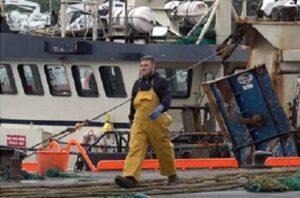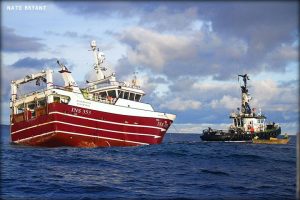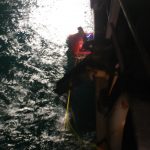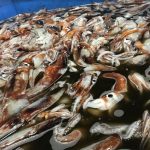Fake News, Incomplete/Inaccurate Reporting, Intentional Misdirection and Fishing
Nils E. Stolpe, click to visit >FishNet USA,< January 22, 2019
Fake news is in the News these days, so what is it? The term is most often used to describe completely fabricated stories, but can also be applied to a broader continuum of news. Many news outlets will exhibit some form of explicit or implicit bias while not falling into the fake news category. Assessing the quality of the content is crucial to understanding whether what you are viewing is true or not. It is up to you to do the legwork to make sure your information is good.
· Fake News: Sources that intentionally fabricate information, disseminate deceptive content, or grossly distort actual news reports.
· Satire: Sources that use humor, irony, exaggeration, ridicule, and false information to comment on current events.
· Bias: Sources that come from a particular point of view and may rely on propaganda, decontextualized information, and opinions distorted as facts.
· Rumor Mill: Sources that traffic in rumors, gossip, innuendo, and unverified claims.
· State News: Sources in repressive states operating under government sanction.
· Junk Science: Sources that promote pseudoscience, naturalistic fallacies, and other scientifically dubious claims.
· Clickbait: A strategically placed hyperlink designed to drive traffic to sources that provide generally credible content, but use exaggerated, misleading, or questionable headlines, social media descriptions, and/or images.
Source: Penn State University Libraries, https://guides.libraries.psu.edu/fakenews.
While to most people the idea of Fake News is a recent phenomenon, coming to widespread attention during our most recent presidential election, it has undoubtedly been with us in one form or another ever since our ancestors came down out of the trees and started grunting at each other to communicate. But the burgeoning of social media over the last decade, as well as the fact that platforms such as Facebook, Twitter and a bevy of imitators are becoming the primary source of supposed “news” for an increasing proportion of the population, has exacerbated the negative impacts of ill- or uninformed citizens on skewing public policy.
Unfortunately, as folks who regularly – or even irregularly – read FishNet are aware, fishermen have been and continue to be impacted by “fake news,” in all of its forms more than just about any other group – with the possible exception of politicians!
A recent column on the Bloomberg Opinion website (https://www.bloomberg.com/opinion/articles/2018-12-28/illegal-fishing-is-a-global-security-threat) provides a particularly egregious example of this. The column, by the Bloomberg Editorial Board no less, was on the probable threat (in the minds of the members of the Editorial Board members) that illegal fishing poses to world peace and security. Of course the article is accompanied by a large photograph of four or so rafted fishing boats smokingly ablaze with a marine police vessel apparently “on patrol” in the foreground. While there is no explanation of what was going on in the article, the implication was obviously that the vessels, and their crews, were engaged in something that had to do with illegal fishing.
According to the Bloomberg Editorial Board, “with 90 percent of fish stocks now fully depleted or overfished and the world’s reefs dying, fleets are increasingly operating illegally in other countries’ exclusive waters and in areas of the high seas protected by international agreements.” Particularly because it was only an inch or so under the photo of the billowing black clouds from the blazing fishing boats, the stage is all set for another assault on fishing and fishermen.
But, as we all should do far more often than we do, let’s look a little more closely at this so-called news.
First off, what could “fully depleted” possibly mean? I’m fairly familiar with scientific/technical terminology in general and fisheries terminology in particular, and that’s one that’s not familiar to me. The only possible meaning I could give it would be all gone/extinct , and I’d bet dollars to donuts that if there was the slightest possibility that any fish species was anywhere near approaching extinction because of fishing at least a half a dozen mega-foundations would be pouring mega-millions of dollars into shouting that doom-and-gloom story anywhere they could.
As far as I know, no commercially important fish species has become extinct – or fully depleted – in recent years due to fishing pressure (or anything else).
“The low level of extinction of marine fish is driven by their specific demographic strategy. Indeed, the life strategy of most marine fish species is characterized by high fecundity, the production and release of large amounts of eggs into the marine environment, and lack of parental care. This strategy leads to high mortality in early life stages, high variability in abundance, and survival-to-maturity rates as low as 1:100,000 (8) [compared with mammals and birds, who have few offspring (<20) per reproductive event but lower mortality rates (9)]. However, this life strategy also results in a much lower probability of population extinction, as only a few female marine fish can potentially generate millions of juvenile fish.” Le Pape, Oliver: S. Bonhommeau, A. Nieblas, and J. Fromentin; Overfishing causes frequent fish population collapses but rare extinctions; Proceeding of the National Academy of Sciences; August 1, 2017; https://www.pnas.org/content/114/31/E6274#ref-4.
A little back checking indicates that what the Bloomberg Board almost certainly meant was “fully fished or overfished.” Along with overfished and underfished, fully fished is a commonly used descriptor of the condition of a stock or stocks of fish.
From a Pew/Oceana press release dated July 7, 2016:
“The United Nations Food and Agriculture Organization (FAO) has today released its report on the state of world fisheries and aquaculture. The flagship SOFIA report, considered a check-up on the world’s fish supplies, has confirmed an alarming trend over the years in falling fish stocks, the result of vast overfishing on a global scale. Oceana regrets the new findings, which place overfished and fully-fished stocks at 89.5% in 2016, compared to around 62-68% in 2000.”
From Pew/Oceana’s Latest Exercise In Crepe Hanging, a FishNet piece I wrote ref this Pew/Oceana press release back then (https://www.savingseafood.org/opinion/nils-stolpe-pewoceanas-latest-exercise-crepe-hanging/):
Hard as it is to imagine, Pew/Oceana’s latest “the sky is falling” attempt at mobilizing the forces of righteousness to avoid the end of the world’s oceans via rampant overfishing took some startling liberties in crafting their latest call to arms (i.e. make a donation to Oceana). In their attempt to convince potential donors that oceanic doom and gloom had already arrived, the people at Pew/Oceana tried to conflate “overfished” and “fully fished” fish stocks, illogically putting them in the same category, allowing their use of the alarming seeming (to the average unsophisticated reader) 89.5% figure. Get out the checkbooks, folks! But, with a nod to Paul Harvey, how about the rest of the story?
From the FAO report (http://www.fao.org/3/a-i5555e.pdf) on Pg. 5, “fully fished stocks accounted for 58.1 percent (of the world’s capture fisheries) and underfished stocks 10.5 percent.” In other words, just under 70% of the world’s fish stocks aren’t overfished and just over 30% are.
But that’s nowhere nearly as dismal-sounding as Pew/Oceana’s almost 90% either being overfished or not underfished – though it’s certainly the way that any group that isn’t crisis-oriented would present the data.
Consider the FAO figures in a different context. Obviously there are three classes of drivers; drivers who drive below the speed limit, drivers who drive at the speed limit and drivers who drive over the speed limit. Let’s assume that 10.5% of drivers are in the first group, 58.1% are in the second and 31.4% are in the third. And then let’s assume that you wanted to make it appear as if speeding was as much of a problem as possible. Would you write that just under 70% of drivers drove at or below the speed limit or that almost 90% of drivers drove at or above the speed limit? Both are correct, but in the first case the focus is on drivers who are operating their vehicles lawfully and in the second the focus has been shifted to drivers who are speeding.
While it’s difficult to decide which of Penn State’s fake news categories is being applied in these several instances of anti-fishing alarmism, the framework that Supreme Court Justice Potter Stewart used to define pornography would seem to work here is as well.*
Defining fake news isn’t an easy task, but an adequate knowledge of and an objective interest in the subject matter of any reporting that is suspect should tell you all you need to know about its veracity.
But the oceans are vast, the biological and physical processes that go on in them are complex, and the fishing industry is large and its operations are beyond the understanding of just about everyone. These all conspire to make the selective use – or misuse – of “official” and scientifically/statistically verifiable information in a manner that paints the most pessimistic picture of what’s being done to the world’s oceans quite easy to do. This has been taken advantage of by anti-fishing individuals and groups for at least the last century, and it’s obvious that, rather than establishing an adequate background in ocean- and fishing-related subjects, the average reporter just buys into the alarmist rhetoric.
Unfortunately this is anything but a recent phenomenon. To demonstrate how long this has been going on. The following links are to three articles I’ve previously written on fishing focused “fake news” over the past hundred years (http://www.fishnet-usa.com/MediaGettingItWrong.pdf, http://www.fishnet-usa.com/InBellyOfBeast.pdf, http://www.fishnet-usa.com/HuffingtonPostWrong.pdf ). Without a doubt every time this happens – particularly without an adequate and convincing rebuttal from the fishing industry – it strengthens the hand of the anti-fishing activists and damages the domestic commercial fishing industry.
This fake news, the unjustified public and political concern it has generated and the unnecessarily harsh catch and operational restrictions that it has forced has cost the domestic fishing industry, the domestic economy and U.S. consumers billions of dollars.
<><><><><><><><><><><><><><>
*(In 1964, Justice Stewart tried to explain “hard-core” pornography, or what is obscene, by saying, “I shall not today attempt further to define the kinds of material I understand to be embraced… but I know it when I see it” https://corporate.findlaw.com/litigation-disputes/movie-day-at-the-supreme-court-or-i-know-it-when-i-see-it-a.html).
© 2018 Nils E. Stolpe



















































